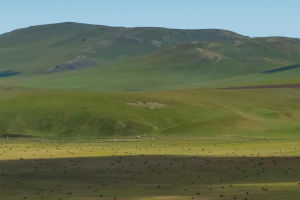Windmills have a rich history that dates back over two thousand years. These machines have played a crucial role in a wide range of industries, from grinding grain to pumping water for irrigation. The earliest known windmills were developed in ancient Babylon, Persia, and China.
These windmills were vertical-axis machines that used sails similar to those found on ships. The sails would rotate around a vertical axis, providing power to the machine.
Over time, the design of windmills evolved, and by the seventh century, horizontal-axis wooden windmills had been developed. These windmills were more efficient than their vertical-axis counterparts and quickly became the most commonly used type of windmill in Europe.
In the Netherlands, windmills have played a crucial role in controlling water levels in low-lying areas. More than 60% of the Dutch population live below sea level, and for centuries, the Dutch have built windmills to help them manage the water.
The first windmills in the Netherlands were used for drainage and de-wetting the lowlands. Later, windmills were used for a wide range of industrial applications, including sawmills, oil mills, and paper mills.
Today, there are still over 800 windmills in the Netherlands, and they are a popular tourist attraction.
One of the most famous windmill locations in the Netherlands is the village of Sans Anse. Here, visitors can see old windmills and traditional Dutch houses surrounded by blooming flowers. The natural environment, surrounded by wetlands, is an idyllic place to experience the beauty of the traditional Dutch countryside.
In Greece, the windmills of Mykonos are an iconic landmark. Five windmill sets in Mykonos town stand on a hill overlooking the area. These windmills were built by the Venetians in the sixteenth century to grind wheat. Today, most windmills are no longer in use, but they remain a popular tourist attraction.
In Sweden, the island of Öland is known for its wooden windmills. There are around 400 of these windmills on the island, and they have protected monuments. Most of the windmills were built to meet the needs of individual farms and are now a symbol of the island's heritage.
Despite their long history, windmills remain a relevant technology today. Modern wind turbines are much more efficient than their predecessors and can generate significant amounts of renewable energy. Wind power is becoming an increasingly important source of electricity around the world, with countries like Denmark, Germany, and China leading the way in wind power generation.
Windmills have played a vital role in many industries throughout history. From their humble beginnings as vertical-axis machines to the modern wind turbines of today, windmills have evolved to meet the changing needs of society. Whether used for grinding grain or generating electricity, windmills are an enduring symbol of innovation and human ingenuity.
In modern times, wind energy has become an increasingly important source of renewable energy. Wind turbines, which are large windmills with horizontally rotating blades, are used to generate electricity.
The blades are connected to a generator, which converts the rotational energy of the blades into electrical energy. Wind turbines are now commonly used in wind farms, which are large groups of wind turbines that are used to generate electricity for entire communities.


